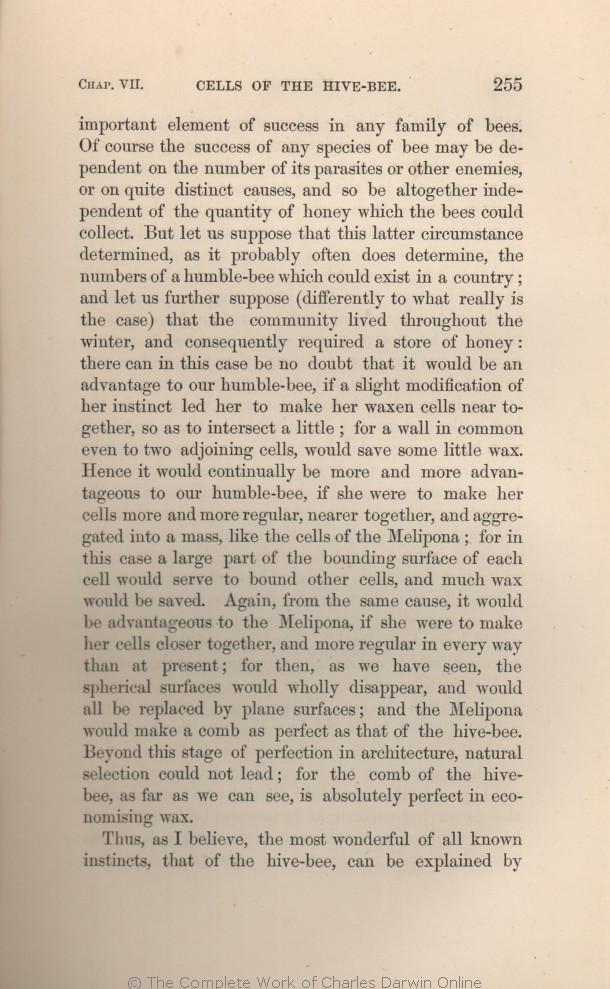important element of success
in | in 1859 1860 1861 | | to 1866 1869 1872 |
| any 1859 1860 1861 1866 | | the 1869 1872 |
| of bee 1859 1860 1861 1866 | of bee 1869 1872 |
| parasites 1859 1860 1861 1866 | | enemies, 1869 1872 |
| other enemies, 1859 1860 1861 1866 | | parasites, 1869 1872 |
| could 1859 1860 1861 1866 1869 | | can 1872 |
| does 1859 1860 1861 | | has 1866 1869 1872 |
| determine, 1859 1860 1861 | | determined, 1866 1869 1872 |
| the numbers of a humble-bee which could 1859 1860 1861 |
| the numbers of a bee allied to our humble-bees, which 1866 |
| whether a bee allied to our humble-bees could 1869 1872 |
| exist 1859 1860 1861 1869 1872 | | existed 1866 |
| a 1859 1860 1861 |
| any 1866 |
| large numbers in any 1869 1872 |
| (differently to what really is the case) that 1861 |
| that 1859 1860 1866 1869 1872 |
| throughout 1859 1860 1861 1866 | | through 1869 1872 |
| humble-bee, 1859 1860 1861 | | imaginary humble-bee, 1866 1869 1872 |
| of 1859 1860 1861 | | in 1866 1869 1872 |
| instinct 1859 1860 1861 | | instincts 1866 1869 1872 |
| cells, 1859 1860 1861 1866 | | cells 1869 1872 |
| wax. 1859 1860 1861 |
| wax and labour. 1866 |
| labour and wax. 1869 1872 |
| advantageous 1859 1860 1861 1866 1869 | | advan- tageous 1872 |
| humble-bee, 1859 1860 1861 1866 | | humble-bees, 1869 1872 |
| she 1859 1860 1861 1866 | | they 1869 1872 |
| her 1859 1860 1861 1866 | | their 1869 1872 |
| other 1859 1860 1861 1866 | | the adjoining 1869 1872 |
| wax 1859 1860 1861 1866 |
| labour and wax 1869 1872 |
| would 1859 1860 1861 1869 1872 |
| and labour would 1866 |
| disappear, 1859 1860 1861 1866 | | disappear 1869 1872 |
| would all 1859 1860 1861 1866 | would all 1869 1872 |
| wax. 1859 1860 1861 |
| labour and wax. 1866 1869 1872 |
|









